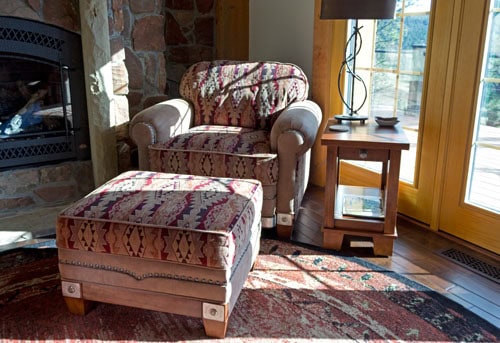
Amish Furniture To Match Your Style
Solid Wood Amish Furniture to Match Your Style
If you’re sold on the benefits of solid hardwood furniture and the excellent craftsmanship of Amish cabinetmakers, you may still have a major concern: Can you find furniture in the design that matches your décor and artistic tastes? Rest assured, you can. Welcome to Amish Furniture To Match Your Style.
Is Amish furniture available in a number of styles?
Yes. Amish craftsmen build solid wood furniture in a variety of styles, including Traditional, Shaker, Mission, Rustic, and Modern. Let’s look at these styles so you can determine which one best meets your needs and desires. Also, you can check out these styles online.
What is Traditional furniture?
Created before the modernist movement in furniture design of the early to mid-20th century, Traditional furniture picks up design elements of the Victorian and Edwardian periods in Great Britain. These elements include crown moldings, intricate carvings, turned legs, and a curved silhouette. Chairs may feature a high back and curved, winged sides, while occasional tables might come with a marble top and claw-foot legs. Other features that set Traditional furniture apart include dark wood stain, luxurious upholstery, and gold trim. Another form of traditional furniture is the Queen Anne style. It’s characterized by a flowing design, elegant curves, and cabriole (animal-like) legs.
Is Queen Anne a popular furniture style?
Yes. Easily recognized by its curved lines, cabriole (animal-like) legs, graceful design, and delicate ornamentation, Queen Anne furniture continues to be a popular choice for collectors and regular furniture lovers alike. The style originated in 18th-century England and was adopted by many of the American colonizers. The furniture in the Governor’s Council Chamber of Independence Hall, Philadelphia, Pennsylvania, is Queen Anne style. Today, furniture enthusiasts choose Queen Anne to give interiors the feel of antiquity and also to blend traditional styles with contemporary elements. Furniture pieces typically adorned in the Queen Anne style include tables and chairs, bedroom sets, ottomans, hutches, desks, and bookcases. Woods of choice for Queen Ann furniture are walnut, cherry, and maple.
What is special about Shaker furniture?
The Shaker furniture style is characterized by its practical, simple, and minimalist design. The style was developed by the Shakers, a religious group that lived in communities across New England, New York, Ohio, Kentucky, and Indiana beginning in the 18th century. The Shakers focused on personal piety, pacifism, and communal living. They crafted furniture to serve their own needs and reflect their unpretentious lifestyle. As a result, Shaker furniture has no ornamentation, which the group considered to be prideful. Rather, the style features simple, gracious curves; round, wooden knobs; tapered feet; and lighter wood stains. These features give the Shaker style its simple elegance and timeless look and feel. Also, for these reasons, Shaker furniture complements many other styles – thereby enhancing its wide acceptance.
Why is Mission-style furniture so popular?
Several factors – including straight lines, 90-degree angles, extreme simplicity, lack of ornamentation, and a hefty persona – make the Mission style a very popular choice among furniture buyers. These features help Mission-style pieces pair easily with other furniture styles. Mission furniture owes its origin to the Catholic missions that sprang up in the American Southwest. Spanish missionaries built adobe-walled missions, and their simplistic building design inspired succeeding generations of artists. Over time, the ‘Mission’ style began to filter into many artistic fields. Then, furniture manufacturer and designer Gustav Stickley popularized the classic Mission style furniture design. Today, many Mission pieces include embellishments such as slats, corbels, visible tenons, and ebony inlays.
Is Rustic furniture trendy?
Absolutely. Rustic furniture highlights the imperfections and unique characteristics of natural wood, resulting in furniture that’s renowned for being cozy, comfortable, welcoming, and trendy! Rustic furniture typically features knots, cracks, and other natural imperfections. Some pieces have natural bark, rugged ‘live edges’ and visible saw marks (called ‘rough sawn’). Also, Amish cabinetmakers are increasingly building furniture from recycled barnwood — typically oak and maple. In addition, an emerging trend with rustic furniture involves integrating metal with rustic wood to create a modern, industrial look. Because rustic furniture focuses on the wood itself, most rustic pieces are built with simple designs and straight lines, such as those found with the Mission style.
Is Modern furniture okay for older homes?
Yes. Modern furniture works well in older homes, providing you balance the contrasting styles with classic elements and accessories, thereby tying the room together. For example, you may wish to place mid-century modern furniture in a mid-century house. The Modern furniture style came into prominence after World War II and reached a high point in the 1950s and ‘60s. The style features bold geometric shapes (such as rectangles), strong straight lines, and sweeping curves. Furniture designers often incorporate materials like leather, vinyl, plastic, and chrome-plated steel into Modern furniture pieces. Amish Furniture Shops build several pieces in the ‘Modern’ genre.
Is Modern Amish furniture heirloom-quality?
Yes. Modern Amish furniture is generally considered to be heirloom quality due to its superior craftsmanship, use of solid hardwood and other quality materials, timeless designs, and uniqueness. This means the pieces of Modern Amish furniture you buy should, with proper care, last for a very long time – long enough that several generations can enjoy them.
Is it okay to mix furniture styles?
Yes. Furniture styles can be mixed in order to create unique rooms that express your personality and/or design style and enhance the nature and purpose of the room.
Mixing furniture designs frees you up to outfit a room with a variety of pieces you love, even though they represent different styles. For example, you can complement ornamental pieces like Queen Anne furniture with Mission style pieces. In this case, the straight lines and lack of ornamentation of the Mission style will accentuate the curves and carvings of the Queen Anne style.
Of course, mixing and matching can be cost-effective, since you’re able to combine furniture you already have, which belongs to one style, with new pieces from another style.
Another way to mix and match furniture styles involves integrating specific elements to enhance the look and feel of a room. For example, you can spruce up a bedroom by adding an accent table with a marble top. Or, you may wish to decorate the dining room window nook with wicker-themed furniture to contrast the walnut finish of your Mission-style dining set.
Whatever you do, don’t be afraid to experiment. Mix and match different styles and pieces to find what works best for you. Instead of moving furniture around while in the room planning stage, you may wish to use a room planner app in which you can arrange the pieces of furniture virtually on your laptop computer or smartphone. Make sure the room you create reflects your style. And have fun doing it.
How do I mix and match furniture styles?
When designing a room in which you mix and match furniture styles to express your tastes and meet the objectives of the room (such as entertainment, dining/hosting, or relaxation), you need to select a dominant furniture style, add contrasting furniture, and incorporate proper furniture placement and traffic flow.
Start by choosing a furniture style as the dominant, foundational style for the room. This style may be one you already have or are planning to buy. Make sure you really love this style, since all the other elements in the room will be subservient to it. The style you choose might be Mission, Shaker, Traditional, Rustic, Modern, or whatever floats your boat.
Then, add the contrasting furniture. Make sure the competing pieces complement, rather than compete with, the dominant furniture in the room. For example, if your dominant furniture is Shaker (with its understated elegance, clean lines, and wood knob hardware), you may not wish to complement it with Mission pieces, since the styles are somewhat similar. Instead, you might want to complement Shaker with Modern or Contemporary pieces – complete with unusual shapes, metal base, and unusual elements like wicker baskets. Make sure the styles not only complement each other but also contrast with each other.
Pay close attention to the placement of furniture in the room. Yes, the arrangement of furniture must catch the eye. But the furniture should be arranged so the ‘gathering spot/s’ in the room do not double as the traffic flow path through the room.
Can I find several styles of Amish furniture online?
Yes. Several Amish furniture retailers sell furniture in the Traditional, Shaker, Mission, Rustic, and Modern styles. One of these retailers is e-Amish Furniture. E-Amish offers finished heirloom-quality Amish furniture directly from their vast inventory. Or, you can order pieces with limited customization, such as your choice of varnish. That way, you can match your new furniture with your existing pieces. And your furniture will arrive fast through the company’s Quick Ship program.
How can you find out more about solid hardwood furniture?
To learn more about Amish solid hardwood furniture, check out Why Amish Furniture? Your Grandkids Will Thank You!. Additionally, for more information on buying hardwood furniture online, visit “How to Buy Amish Furniture Online”.



 833-326-4743
833-326-4743


